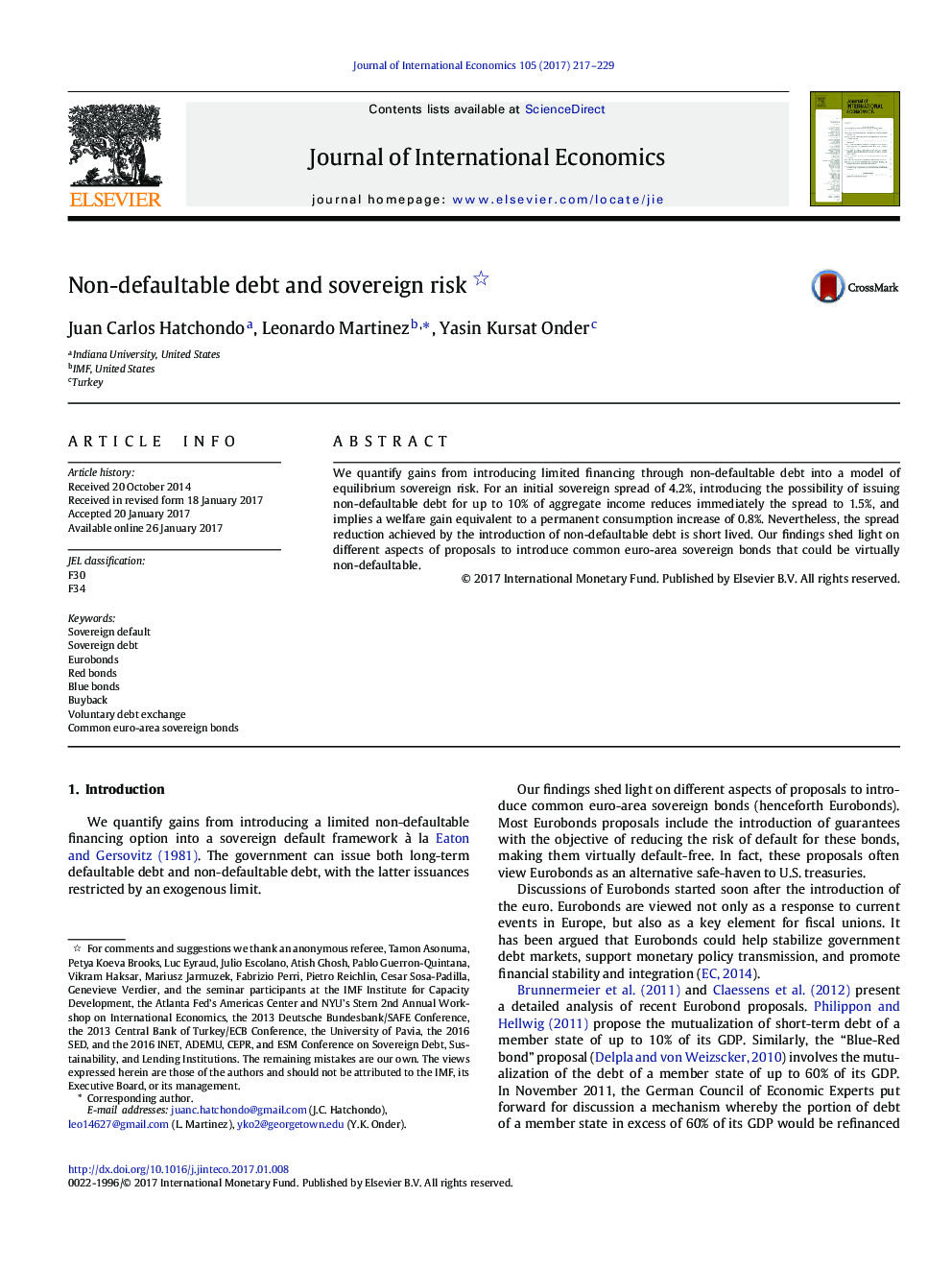| Article ID | Journal | Published Year | Pages | File Type |
|---|---|---|---|---|
| 5100957 | Journal of International Economics | 2017 | 13 Pages |
Abstract
We quantify gains from introducing limited financing through non-defaultable debt into a model of equilibrium sovereign risk. For an initial sovereign spread of 4.2%, introducing the possibility of issuing non-defaultable debt for up to 10% of aggregate income reduces immediately the spread to 1.5%, and implies a welfare gain equivalent to a permanent consumption increase of 0.8%. Nevertheless, the spread reduction achieved by the introduction of non-defaultable debt is short lived. Our findings shed light on different aspects of proposals to introduce common euro-area sovereign bonds that could be virtually non-defaultable.
Related Topics
Social Sciences and Humanities
Economics, Econometrics and Finance
Economics and Econometrics
Authors
Juan Carlos Hatchondo, Leonardo Martinez, Yasin Kursat Onder,
